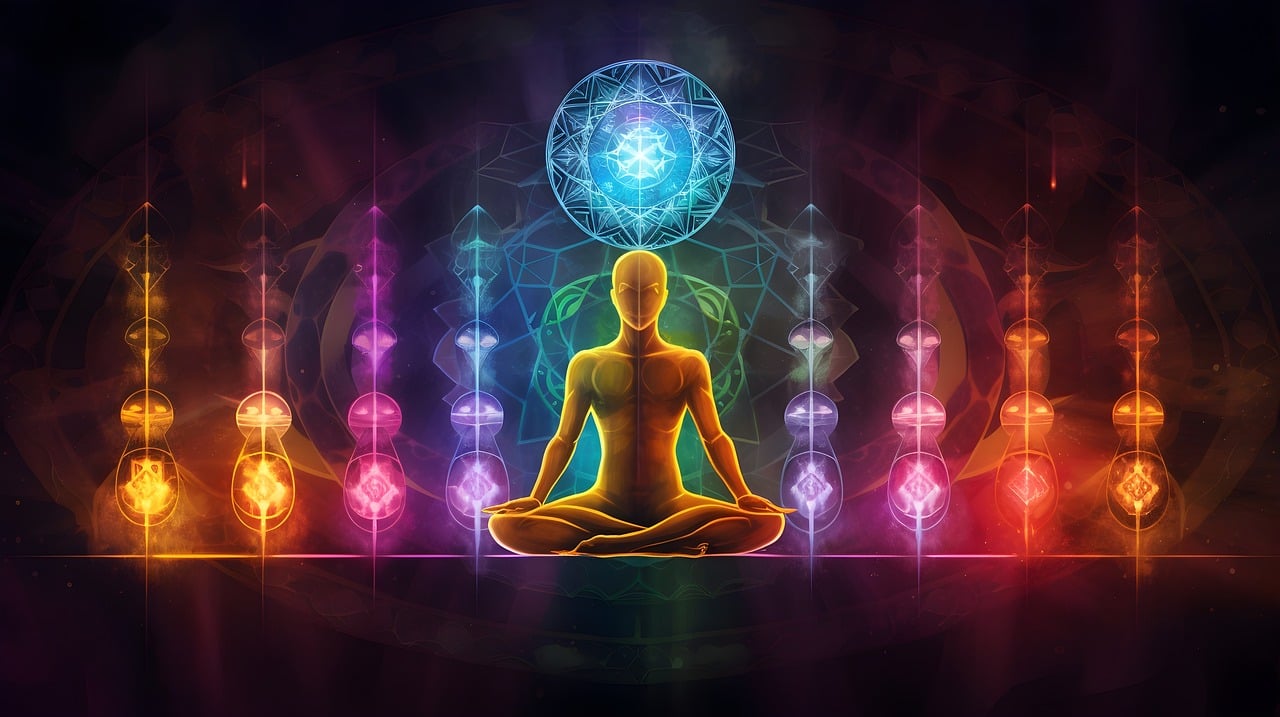
The term “Muladhara” in Sanskrit means “root support” and refers to the root chakra, which is linked to our sense of security, belonging, and survival. This chakra governs fundamental human needs like food, shelter, and safety, contributing to feelings of stability and grounding. It is associated with the earth element and is represented by the color red, which signifies vitality.When the root chakra is blocked or unbalanced, it can lead to various physical symptoms such as lower back pain, sciatica, low energy, issues with legs and feet, and digestive problems. Emotional and psychological symptoms may include anxiety, feelings of disconnection, lack of focus, financial concerns, and loneliness. A blocked root chakra can result in feelings of instability, chronic stress, and anxiety. Conversely, when the root chakra is overactive, it may cause greed, materialism, and a strong desire for control. The article focuses on the concepts of unblocking and balancing the root chakra, specifically the Muladhara chakra. It explores practices aimed at activating, cleansing, and harmonizing this energy center.
- Yoga asanas for Root Chakra- Yoga postures can effectively activate the Muladhara chakra and ground the body. These asanas focus on stabilizing the lower body, strengthening the legs, and connecting with the earth element. Certain poses are particularly helpful for unblocking and balancing the root chakra. These yoga poses are-
A) Mountain Pose (Tadasana)- This foundational pose promotes grounding and stability by aligning the spine and enhancing awareness of the body’s connection to the earth. To perform it, stand with feet hip-width apart, firmly grounding them, engage the thighs, and lift the kneecaps for leg strength. Lengthen the spine, open the chest, relax the shoulders, close your eyes, and breathe deeply while envisioning energy flowing from your feet into the earth.
B) Warrior I (Virabhadrasana I)- Warrior poses help ground and empower individuals. Warrior I strengthens the legs and opens the hips, promoting energy flow through the root chakra. To perform it, start in Mountain Pose, step back with the right foot, keeping feet 3-4 feet apart. Bend the front knee while keeping the back leg straight. Raise your arms overhead and press your feet into the ground. Hold for a few breaths before switching sides.
C) Garland Pose (Malasana)- The deep squat pose promotes grounding and connection to the earth while opening the hips and stimulating the lower body, associated with the root chakra. To perform it, squat with feet slightly wider than hip-width apart, keeping heels down. Bring palms together at the chest, pressing elbows into inner thighs, and lengthen the spine while breathing deeply to ground the hips.
D) Tree Pose (Vrikshasana)- Tree pose enhances balance and concentration, fostering a sense of inner stability. To perform it, begin in Mountain Pose, shift your weight to one leg, and place the opposite foot on the inner thigh or calf. You can either join your hands in prayer at your heart or raise them overhead. Maintain a point of focus and breathe deeply to feel grounded through the standing leg.
E) Child’s Pose (Balasana)- Child’s Pose is a restorative yoga posture that calms the nervous system and focuses on the lower back and hips. To perform it, kneel with your big toes touching and knees apart, sit back on your heels while stretching your arms forward and lowering your forehead to the floor. Breathe deeply to release tension in the lower body.
- Lifestyle Practices for Root Chakra- To maintain a balanced root chakra, engage in various lifestyle practices alongside yoga. Spend time in nature by walking barefoot or hiking to ground your energy. Use essential oils like vetiver, cedarwood, patchouli, and sandalwood during yoga or meditation for their grounding properties. Incorporate earth-based foods, particularly root vegetables and protein-rich foods, to nourish the root chakra. Grounding rituals such as mindful walking, gardening, and spending time with animals can enhance your connection to the earth. Additionally, physical activities like dance, strength training, and Pilates support this connection and stabilize the root chakra. Mindfulness is an effective way to remain present and connected to your surroundings. Incorporating mindfulness into daily activities like eating, walking, or working enhances your sense of stability. By focusing on bodily sensations, breath, and the environment, you deepen your connection to the present. The root chakra relates to feelings of safety and security, both physically and emotionally. Establishing healthy boundaries in relationships and personal life is essential for maintaining balance in the root chakra. Honoring your needs and safeguarding your energy boosts your sense of self and security.
-Triparna







